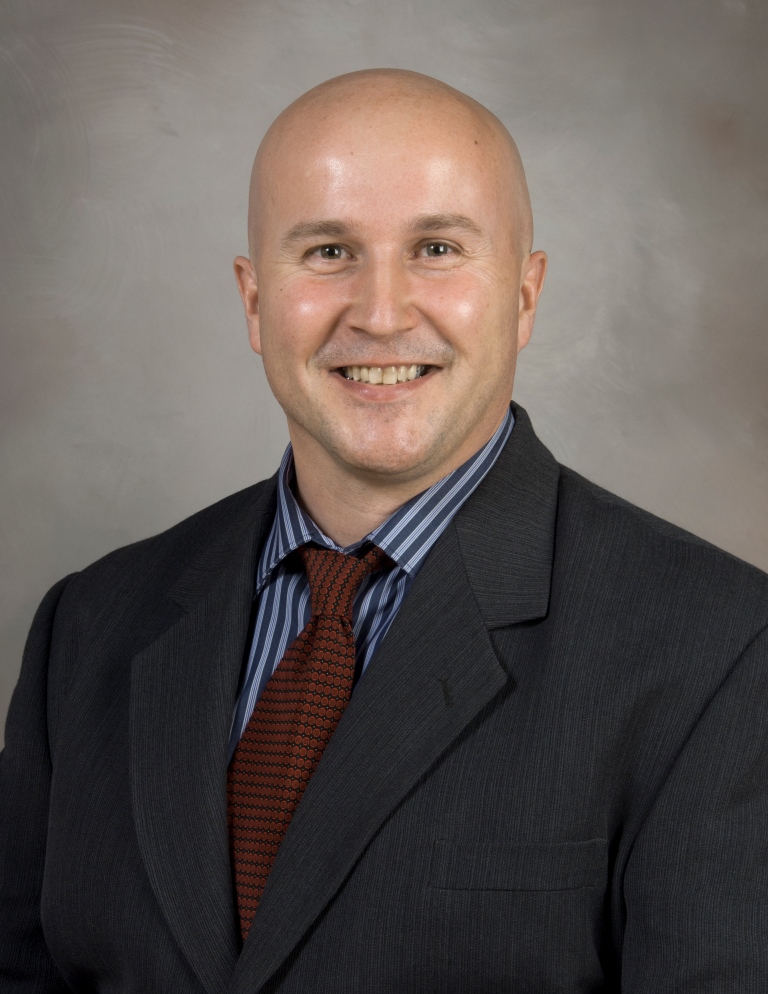Dr. Christophe P Ribelayga
Journal of Clinical and Medical Science
Ruiz Department of Ophthalmology & Visual Science

Name: Dr. Christophe P Ribelayga
Educational Qualification: PhD
Designation: Associate Professor and Bernice Weingarten Chair
Department: Ruiz Department of Ophthalmology & Visual Science
University: The University of Texas Health Science Center at Houston (UTHealth)
Email: Christophe.P.Ribelayga@uth.tmc.edu
Research Interests: Retinal physiology, Circadian biology
Biography: The goals of my laboratory are to elucidate how the brain processes information and adapts to an environment constantly changing over the course of the day/night cycle. We are particularly interested in understanding the role of gap junctions (or electrical synapses) and that of endogenous circadian (24-hour) clocks in the daily plasticity of neuronal network organization. We have focused our studies on the retina, a tractable model for the rest of the central nervous system and a great example of a self-optimizing network controlled, at least in part, by gap junctions and circadian clocks. I am confident that I have the expertise, leadership, and motivation necessary to successfully carry out the proposed research project. I have broad backgrounds in retinal physiology and in circadian biology, with specific training and expertise in key research areas for this research endeavor. As a graduate student at the University Louis Pasteur in Strasbourg, I studied the circadian and seasonal (photoperiodic) regulation of melatonin synthesis in the rodent pineal gland, with a focus on the last enzymatic step of the melatonin synthetic pathway. As a postdoctoral fellow at The University of Alabama at Birmingham and later as a faculty member at The Ohio State University, I studied the control of the light responses of retinal cells, such as cones and horizontal cells, by circadian clocks in the retina. In 2009, I started my own laboratory at the McGovern Medical School at The University of Texas Health Science Center at Houston. As PI on an NIH-funded grant, my expertise in both retinal physiology and biological rhythms, as well as my skills that are of use to study almost any aspect of modern neuroscience, from molecular biology techniques to electrical recording techniques to biochemistry, represent valuable assets to investigate the circadian organization of retinal function. The current application builds logically on my prior work. In addition, I laid the groundwork for the proposed research by developing new electrophysiology and genetic tools to study the dynamic regulation of photoreceptor electrical coupling in mouse retina. To overcome any possible technical difficulties in my research, I have established active collaborations with several colleagues including Drs. Stephen C. Massey and John O’Brien, leading experts in electrical synapses and retinal circuits, and Dr. David W. Marshak, a leading researcher in retinal anatomy. My own research background together with strong collaborations will ensure the smooth completion of the proposed studies.
Selected Publications:
- Ribelayga, C., Gauer, F., Calgari, C., Pévet, P. & Simonneaux, V. (1999). Photoneural regulation of rat pineal hydroxyindole-O-methyltransferase (HIOMT) messenger ribonucleic acid expression: an analysis of its complex relationship with HIOMT activity. Endocrinology, 140(3), 1375-1384. PMID: 10067865.
- Ribelayga, C., Pévet, P. & Simonneaux, V. (2000). HIOMT drives the photoperiodic changes in the amplitude of the melatonin peak of the siberian hamster. American Journal of Physiology Regulatory Integrative and Comparative Physiology, 278(5), R1339-R1345. PMID: 10801305.
- Simonneaux, V. & Ribelayga, C. (2003). Generation of the melatonin endocrine message in mammals: A review of the complex regulation of melatonin synthesis by norepinephrine, peptides, and other pineal transmitters. Pharmacological Reviews, 55(2), 325-395. PMID: 12773631.
- Ribelayga, C., Wang, Y. & Mangel, S.C. (2002). Dopamine mediates circadian clock regulation of rod and cone input to fish retinal horizontal cells. Journal of Physiology (London), 544(Pt 3), 801-816. PMID: 12411525. PMCID: PMC2290614
- Ribelayga, C. & Mangel, S.C. (2003). Absence of circadian clock regulation of horizontal cell gap junctional coupling reveals two dopamine systems in the goldfish retina. Journal of Comparative Neurology, 467(2), 243-253. PMID: 14595771.
- Ribelayga, C., Wang, Y. & Mangel, S.C. (2004). A circadian clock in the fish retina regulates dopamine release via activation of melatonin receptors. Journal of Physiology (London), 554(Pt 2), 467-482. PMID: 14565990. PMCID: PMC1664774
- Ribelayga, C. & Mangel, S.C. (2005). A circadian clock and light/dark adaptation differentially regulate adenosine in the mammalian retina. Journal of Neuroscience, 25(1), 215-222. PMID: 15634784.
- Ribelayga, C. & Mangel, S.C. (2010). Identification of a circadian clock-controlled neural pathway in the rabbit retina. Public Library of Science One, 5(6), e11020. PMC: 20548772. PMCID: PMC2883549
- Mangel, S.C. & Ribelayga, C. (2010). Comparative eye: The circadian clock in the retina regulates rod and cone pathways. In: Dartt DA, Besharse JC, Dana R (eds) Encyclopedia of the Eye, Vol. 1, Oxford (UK): Elsevier, pp 283-289.
- Ribelayga, C., Cao, Y. & Mangel, S.C. (2008). The circadian clock in the retina regulates rod-cone coupling. Neuron, 59(5), 790-801. PMID: 20548772. PMCID: PMC2883549 (Featured Article of the week; highlighted in Faculty of 1000 Biology)
- Liu, X., Zhang, Z. & Ribelayga, C. (2012). Heterogeneous expression of the core circadian clock proteins among neuronal cell types in mouse retina. Public Library of Science One, 7(11), e50602. PMID: 23189207. PMCID: PMC3506613
- Li, H., Zhang, Z., Blackburn, M.R., Wang, S.W., Ribelayga, C. & O’Brien, J. (2013). Adenosine and dopamine receptors co-regulate photoreceptor coupling via gap junction phosphorylation in mouse retina. Journal of Neuroscience, 33(7), 3135-3150. PMID: 23407968. PMCID: PMC3711184
- Jin, N., Chuang, A.Z., Masson, P.J. & Ribelayga, C. (2015). Rod electrical coupling is controlled by a circadian clock and dopamine in mouse retina. Journal of Physiology (London), 593(7), 1597-1631. PMID: 25616058. PMCID: PMC4386962
- Jin, N. & Ribelayga, C.P. (2016). Direct evidence for daily plasticity of electrical coupling between rod photoreceptors in the mammalian retina. Journal of Neuroscience, 36(1), 178-184. PMID: 26740659. PMCID: PMC4701958.

Serial no:
Guidelines
Subscribe

This work is licensed under a
